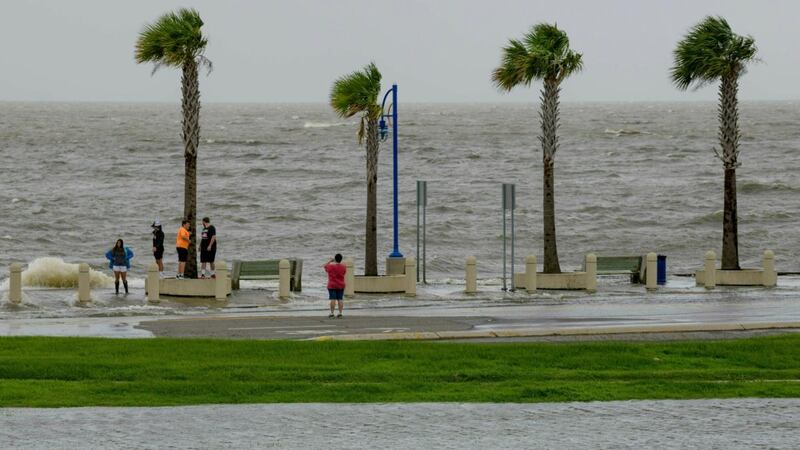A storm forecasters warn is carrying “off the chart” amounts of moisture is slowly crawling towards shore along the US Gulf coast, having already caused widespread power cuts.
Tropical Storm Barry, which was downgraded from a category one hurricane as it came ashore at Intracoastal City, Louisiana, is causing downpours that could last for days in a test of flood-prevention efforts implemented after Hurricane Katrina devastated New Orleans 14 years ago.
The Coast Guard rescued more than a dozen people from the remote Isle de Jean Charles, south of New Orleans, where water rose so high that some residents clung to rooftops.
A levee in Plaquemines Parish, a finger of land extending deep into the Gulf of Mexico downstream from New Orleans, has already been topped by water.
Barry threatens disastrous flooding across a swath of the Gulf Coast.
But in New Orleans itself, officials remain confident its levees will hold firm, with most ranging in height from 20 to 25ft.
More than 70,000 customers are without power due to outages caused by the storm, including 66,830 in Louisiana and 3,140 in Mississippi.
National Hurricane Centre director Ken Graham, giving an update via Facebook Live, pointed to a computer screen showing a huge, swirling mess of airborne water.
He said: “That is just an amazing amount of moisture. That is off the chart.”

Surging water
Downpours are also lashing coastal Alabama and Mississippi. Parts of Dauphin Island, a barrier island in Alabama 200 miles from Barry’s projected path, were flooded both by rain and surging water from the Gulf.
Barry is moving so slowly that it is likely heavy rain will continue throughout the weekend.
There are predictions of 10-20in through Sunday across a swath of Louisiana that includes New Orleans and Baton Rouge, with some parts of the state possible getting 25in.
New Orleans mayor LaToya Cantrell thanked residents for staying off the streets and urged them to remain vigilant because the worst of the wind and rain is yet to arrive.
“Although you may not have seen rainfall as we have been discussing, it is coming our way,” she said.
Looking ahead, tracking forecasts show the storm moving towards Chicago, swelling the Mississippi River basin with water that must eventually flow south again.
Governors have declared emergencies in Louisiana and Mississippi, and authorities have taken unprecedented precautions in closing floodgates and raising the barriers around New Orleans.
Governor John Bel Edwards said it is the first time all floodgates have been sealed in the New Orleans-area Hurricane Risk Reduction System since Katrina.
But he still said he does not expect the Mississippi River to spill over the levees despite water levels already running high from spring rains and melting snow upstream.
Rescue crews and about 3,000 National Guard troops are posted around Louisiana with boats, high-water vehicles and helicopters.
US president Donald Trump has declared a federal emergency for Louisiana, authorising federal agencies to co-ordinate relief efforts.














